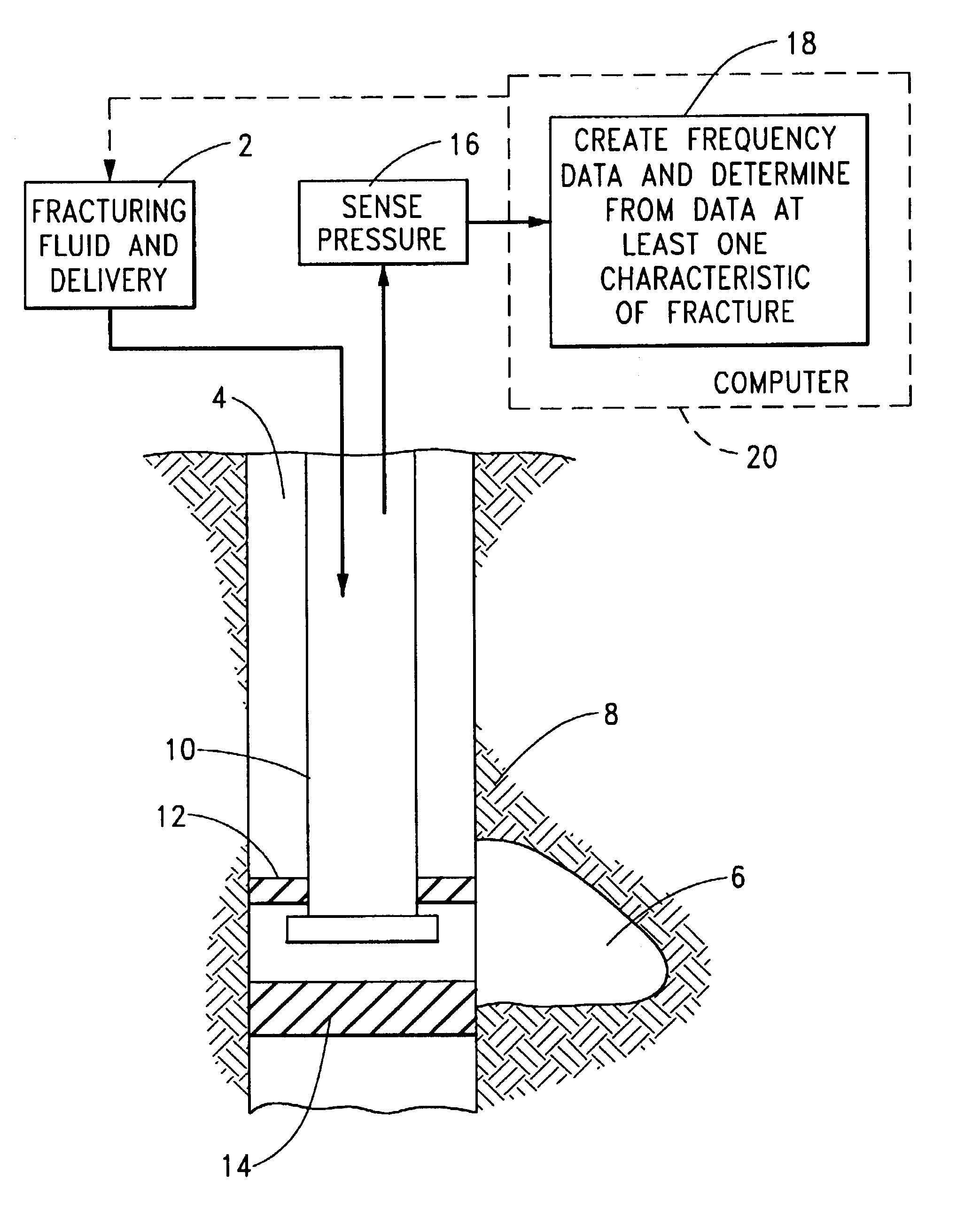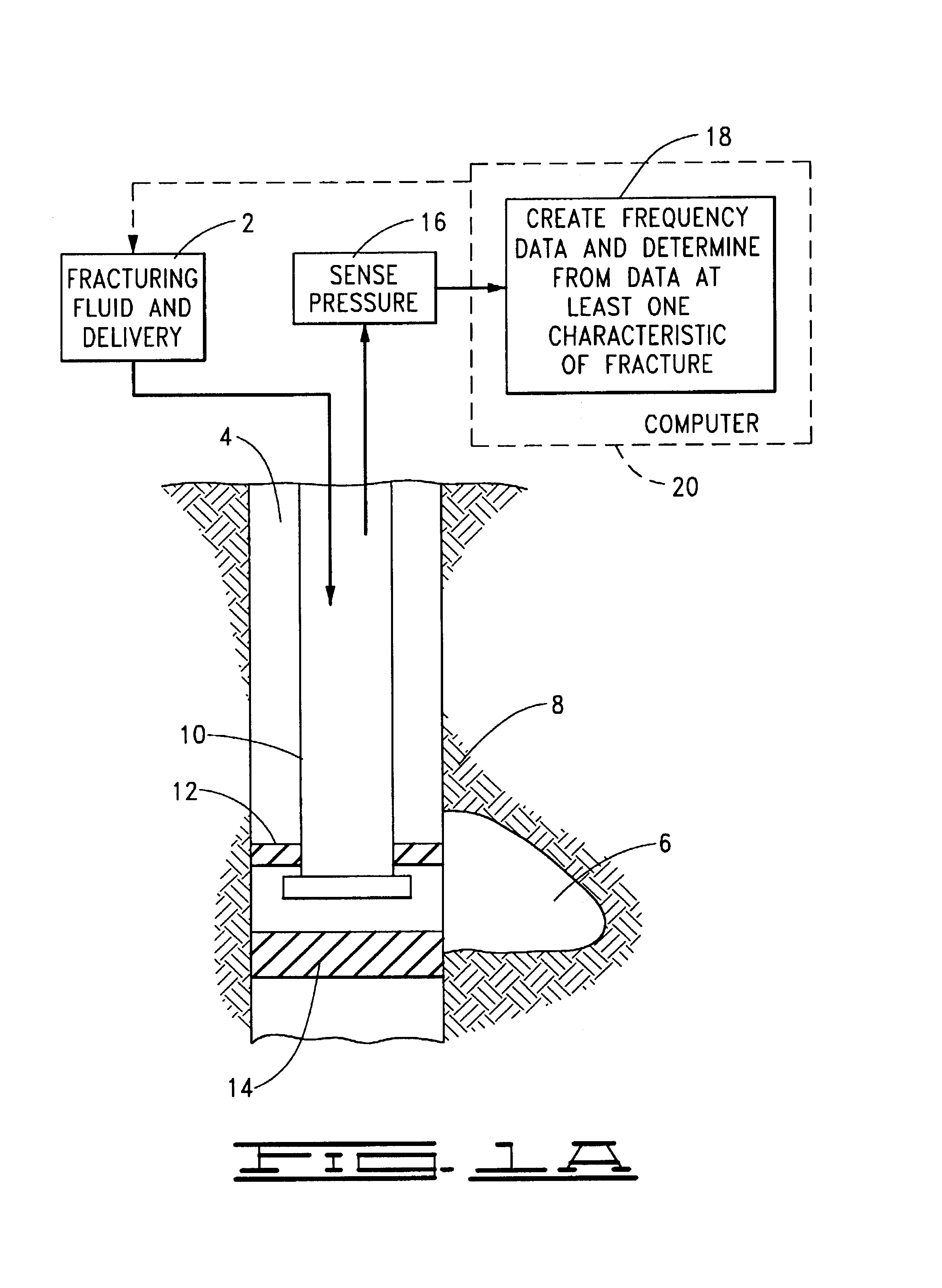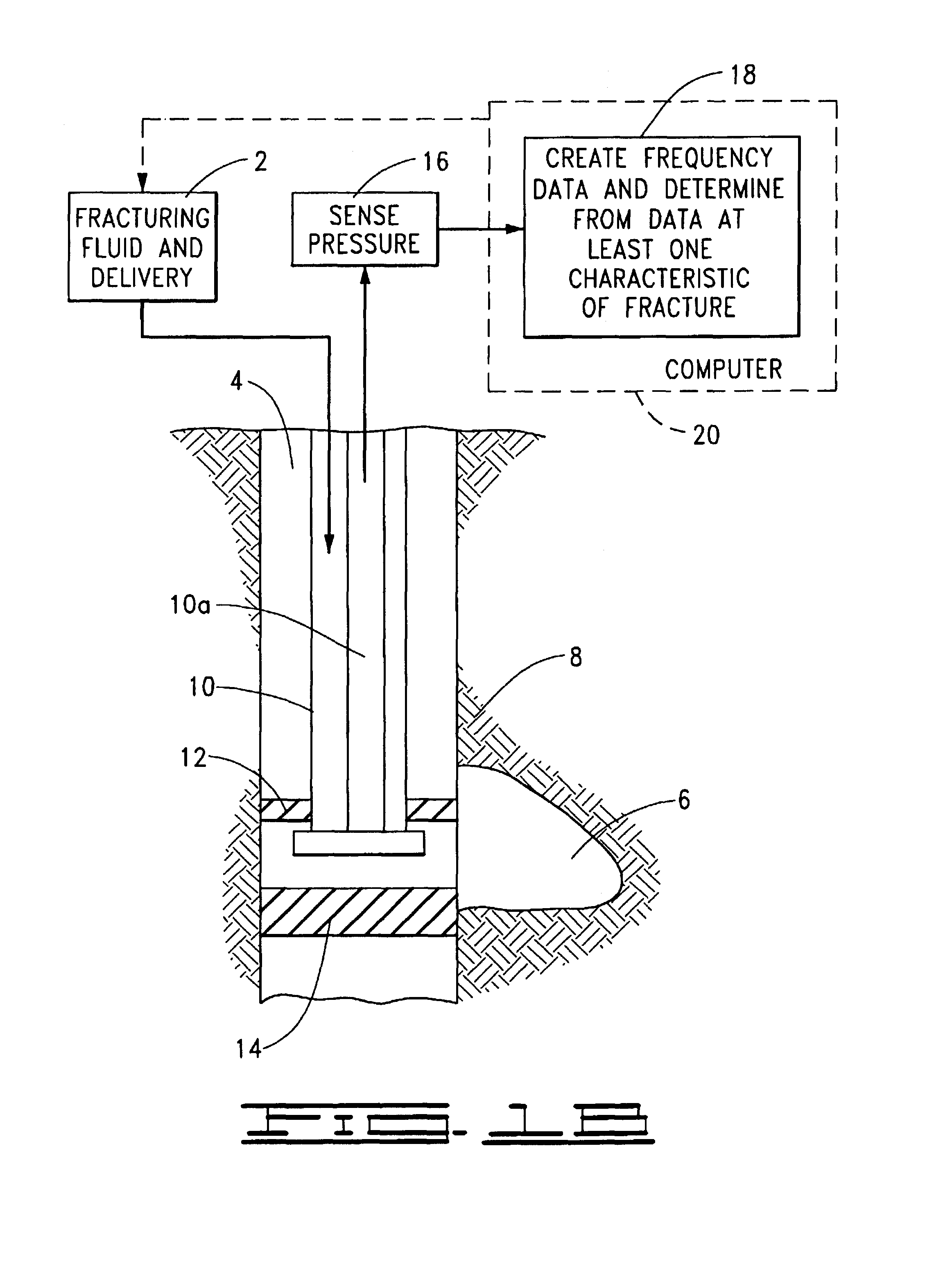Fracture monitoring using pressure-frequency analysis
a technology of pressure-frequency analysis and fracture behavior, applied in the direction of survey, instruments, borehole/well accessories, etc., can solve the problems of few techniques that address fracture behavior and the difficulty of the hunt for hydrocarbons
- Summary
- Abstract
- Description
- Claims
- Application Information
AI Technical Summary
Benefits of technology
Problems solved by technology
Method used
Image
Examples
example 1
[0054]Well A was a vertical well that was proppant stimulated through the annulus. This well was about 8,408 feet deep (measured depth / true vertical depth).
[0055]Using the speed of sound through diesel fluid at about 3,800 feet / second and the equation set forth above, the natural frequency at the wellbore is approximately 0.226 Hz (F=3,800 / (2×8,408)). FIG. 3 shows the waterfall plot of the Fourier transform charts obtained using pressure data for well A sensed through the annulus for an arrangement as in FIG. 1B. Each chart section of FIG. 3 was computed with a 16-second interval between each waterfall element. That is, each curve in the drawing represents one STFT chart of a time slot in time. The wellbore depth / length (natural) frequency component is shown as a straight dotted line 28 in FIG. 3. In this waterfall plot, locations are identified where a certain frequency amplitude exceeds a certain threshold; and the frequency movement or trend is then tracked as time progresses. No...
example 2
[0058]Well B was a vertical well with depth of 6,952 feet and treated using the same manner and same installation as Well A. During this time, the recording equipment was placed in the dead string (tubing) while fracturing was done through the annulus. The stimulation treatment was performed so that a screenout would occur at the end of the job to improve fracture conductivity.
[0059]The STFT stacked chart or waterfall plot obtained as part of the present invention is shown in FIG. 5. The natural frequency related to the wellbore depth and a sound speed of 3,800 feet / second as above can be computed as 0.273 Hz, as illustrated with the dotted line 34. Note that the sound speed changes from fluid to fluid and also is very dependent upon pressure and compressibility. Additionally, the extending of the fracture is clearly represented by this plot (see frequency front; as frequencies get lower), as is a massive screenout at the end of the job (frequency suddenly gets higher prior to the e...
example 3
[0062]Well C was slightly deviated and had a measured depth of about 10,300 feet. Lease crude was used as the primary treatment fluid.
[0063]Using a speed of sound of approximately 4,000 feet / second, a wellbore natural frequency of about 0.2 Hz is obtained. The fracture development can be observed in the Fourier transform chart in FIG. 6, which was created based on the previously obtained pressure data for Well C.
[0064]As busy as FIG. 6 is, confirming what actually happened may be done as shown by the line representing the frequency or wave front as done earlier. However, throughout the plot, there are occasionally high level bursts of noise which seems like white noise (having all frequencies present). To investigate further, wavelets are used. Using wavelet technology, the input signal (here, the pressure data) is decomposed into two sectors, which decomposition occurs in known manner to effectively filter using a selected wavelet function high / low pass filter. Each of these sector...
PUM
 Login to View More
Login to View More Abstract
Description
Claims
Application Information
 Login to View More
Login to View More - R&D
- Intellectual Property
- Life Sciences
- Materials
- Tech Scout
- Unparalleled Data Quality
- Higher Quality Content
- 60% Fewer Hallucinations
Browse by: Latest US Patents, China's latest patents, Technical Efficacy Thesaurus, Application Domain, Technology Topic, Popular Technical Reports.
© 2025 PatSnap. All rights reserved.Legal|Privacy policy|Modern Slavery Act Transparency Statement|Sitemap|About US| Contact US: help@patsnap.com



